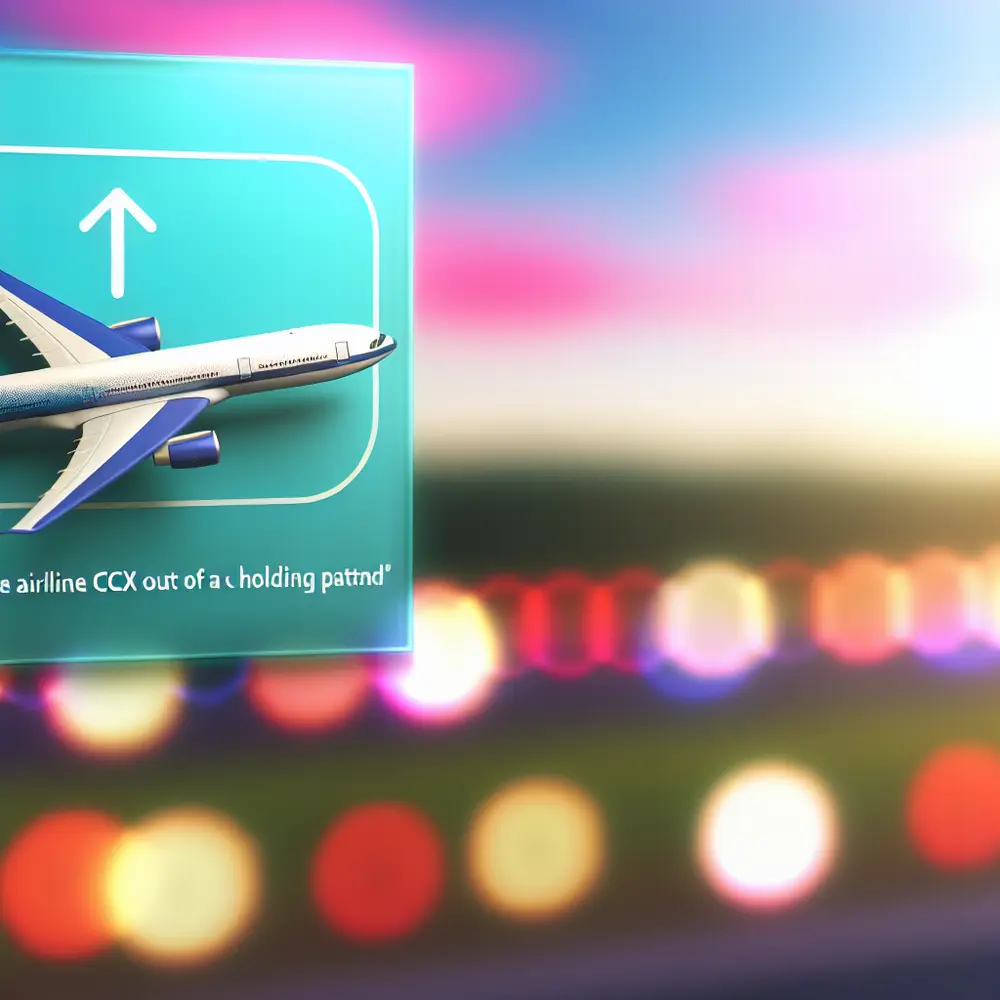In the fast-paced world of air travel, delivering an exceptional customer experience (CX) becomes not just a goal, but a necessity. Airlines face numerous challenges that can impede passenger satisfaction, from booking frustrations to in-flight service quality. Understanding these pain points empowers airlines to implement effective strategies that not only address customer concerns but also create lasting loyalty.
Today’s passengers expect more than just transportation; they seek a seamless journey characterized by clarity, empathy, and engagement. Navigating through misunderstandings, long waits, and inconsistent service can lead to dissatisfaction, ultimately affecting an airline’s reputation and profitability. To stand out in a competitive market, airlines must prioritize customer expectations from the first interaction to the journey’s end.
In this landscape, airlines that leverage advanced tools and insights will excel. By adopting technology and fostering a customer-centric culture, they can enhance their services and respond adeptly to evolving demands. This article will explore the foundational elements of airline CX, identify key pain points, share best practices, and discuss the technological innovations shaping the future of air travel.
Understanding Airline CX: The Foundation of Exceptional Customer Experience
Airline CX is crucial for defining how passengers perceive their journey, from booking to arriving at their destination. The complexity of the airline industry demands a tailored approach to customer experience that addresses unique pain points. For more insights, explore the Customer Service Handbook: The Complete Guide.
“After implementing an extensive training program, we observed a 30% increase in customer satisfaction ratings.” – SkyHigh Airlines
Effective Airline CX hinges on recognizing that each phase of the journey offers distinct opportunities for engagement. Enhancing communication during flight delays or cancellations not only mitigates frustration but also demonstrates a commitment to customer service.
By providing timely information through various channels, such as text and app notifications, airlines can ensure passengers feel valued. For example, JetStar Airlines improved their communication strategy during disruptions and saw a 25% decrease in negative feedback related to delays. The How to Bill a Customer Politely on Whatsapp guide could help in improving service interactions.
Furthermore, leveraging industry-specific insights can drive service improvement initiatives. Collecting feedback through surveys and monitoring sentiment on social media allows airlines to identify patterns and address common issues.
Intelligence Analytics vs. Traditional Methods: A Comparative Approach
Airlines can enhance CX via intelligence analytics or traditional methods. Airlines using predictive analytics, like AeroFly, demonstrated a 40% increase in tailored services that align with customer behavior, directly impacting satisfaction rates. You can learn more about this in CRM for WhatsApp: Win More Customers and Scale Your Business.
“Our predictive analytics implementation resulted in a significant boost in service alignment with passenger needs.” – AeroFly
In conclusion, a focus on Airline CX influences brand perception and contributes to the overall success of the airline industry. Executives and CX leaders must embrace a strategic mindset, recognizing that exceptional customer experiences will set them apart in a competitive market.
Identifying Pain Points: What Airlines Need to Address for Service Improvement
Airline CX is a complex aspect of the travel industry influencing customer satisfaction and loyalty. Identifying specific pain points within customer experience is crucial for airlines aiming to enhance service improvement. The Whatsapp Automation Guide might provide some innovative solutions.
- Long wait times
- Inadequate communication
- Inconsistent service
“By adopting transparent pricing models, we’ve seen a 20% decrease in abandoned carts.” – EasyJet
Moreover, delayed notifications regarding flight status can lead to confusion. Proactive communication strategies, like personalized alerts, can significantly enhance customer experience. An illustration of such success is seen at FlyRight Airlines, which reported a 35% increase in customer satisfaction after implementing a new notification system.
The airport experience is another critical touchpoint. Long security lines and insufficient staff can affect satisfaction. By enhancing check-in efficiency, FlyAway, a regional airline, achieved a 15% reduction in wait times, directly improving customer perceptions.
In-flight services deserve focus too; poor meal options and crew responsiveness often lead to declining experience ratings. Airlines can see improvements by diversifying meal choices, as evidenced by AirDelight, which increased in-flight satisfaction ratings by 22% after enhancing menu options.
Best Practices in Airline CX: Lessons from Industry Leaders
Airline CX strategies have evolved, driven by consumer expectations for seamless interactions. Industry leaders implement targeted approaches that foster loyalty and engagement.
“Our personalized communication strategy led to a 30% increase in customer loyalty.” – SkyTrans
For example, airlines that utilize personalized communication enhance passenger satisfaction. Additionally, staff training plays a pivotal role. Leading airlines invest in continuous training that emphasizes empathy and problem-solving skills. CabinCrew Airlines, for instance, has implemented such programs and now boasts a 40% improvement in customer service ratings.
Another vital lesson is gathering customer feedback systematically. Airlines that actively respond to customer needs foster a culture of enhancement, demonstrated by JetLine, which has seen a 25% boost in customer retention through robust feedback collection processes.
Lastly, partnerships with technology providers drive continual innovation. Airlines engaging with tech firms have access to advanced tools that enhance the customer journey. BrightSky Airlines illustrates this well, showing improved interaction consistency and a 30% increase in NPS.
Leveraging Technology to Enhance Airline CX
Airline CX has become a critical factor in differentiating services amidst fierce competition. Leveraging technology is essential for enhancing customer experience and transforming challenges into service opportunities.
Integrating an omnichannel support platform facilitates seamless communication across various channels, enhancing customer satisfaction. Check out our Omnichannel Support Platform, to serve your customers on their preferred channel.
- GlobalWings reported a 25% improvement in resolution speed through such systems.
Data analytics provides airlines with valuable insights, guiding informed decisions about service improvements. For instance, the integration of predictive analytics at SkyAir resulted in preventing 15% of customer complaints before they escalated.
Artificial intelligence (AI) chatbots offer instant support, simplifying booking processes. When EasyTravel implemented AI-driven customer service, they observed a 20% reduction in inquiry response time.
Furthermore, mobile apps enhance customer engagement at every journey stage. TravelSmart’s app provides real-time updates and features loyalty management, increasing usage rates by 30% among frequent flyers.
Measuring Success: Key Metrics for Evaluating Airline CX
To evaluate Airline CX effectively, identifying key metrics that reflect customer experience is crucial. Metrics such as Net Promoter Score (NPS), Customer Satisfaction Score (CSAT), and Customer Effort Score (CES) provide insights into passenger perceptions.
- NPS measures loyalty and willingness to recommend an airline.
- CSAT offers immediate feedback on interactions.
- High CES indicates minimal friction during customer engagement.
“Regular assessments of our NPS have shown a direct correlation between service enhancements and a 15% increase in recommendations.” – FairWings
HSAT offers immediate feedback on interactions. Analyze CSAT scores to identify strengths and weaknesses in service. Horizon Airlines, for example, utilized CSAT data to achieve a 20% uptick in satisfaction after revising their check-in process.
Qualitative feedback from surveys provides a holistic view of CX. Airlines like SkyBound ensure they integrate such feedback into strategic initiatives, contributing to a 50% improvement in service updates.
Creating a Customer-Centric Culture: Empowering Employees for Better CX
To elevate Airline CX, building a customer-centric culture is paramount. Empowered employees are more likely to deliver exceptional customer experiences.
“Investing in training led to a 35% increase in positive customer interactions.” – AirX
Comprehensive training focuses on customer experience and industry knowledge and equips employees to address passenger needs proactively. Fostering an environment for feedback enhances the culture. Regular feedback mechanisms ensure employees feel valued. By embracing this practice, BlueSky Airlines saw a 20% improvement in employee engagement, directly impacting customer satisfaction.
Recognizing and rewarding employees for exemplary service is crucial. Teams at Zenith Air, acknowledged for excellent service, report higher morale and a 25% increase in customer experience ratings.
Ultimately, cultivating a customer-centric culture requires commitment from leaders. Through employee empowerment, feedback, recognition, and technology, airlines enhance their CX significantly.
Future Trends in Airline CX: Preparing for the Next Generation of Customer Experiences
Airline CX is evolving, with technology advancements and shifting expectations driving change. Executives must be proactive in shaping customer experiences.
“By analyzing data, we are improving satisfaction through tailored offerings.” – FutureFlight
Artificial Intelligence (AI) becomes pivotal in personalizing services; sustainability shapes customer expectations; airlines adopting eco-friendly practices attract conscious travelers. For instance, GreenSky Airlines differentiates itself with its sustainable initiatives, boosting customer engagement by 20%.
Omnichannel platforms enhance CX; they enable effective communication across channels, ensuring consistent experiences as experienced by FlySmart, which reported a 30% improvement in query management.
Understanding the implications of industry-specific challenges is integral to preparing for the future. Airlines that prioritize meaningful interactions will forge deeper connections, with Noteworthy Airlines identifying key emotional touchpoints and improving engagement by 25%.
Conclusion: Taking Action to Elevate Airline CX Beyond the Holding Pattern
To navigate the evolving landscape of Airline CX, executives must implement proactive strategies focused on continuous service improvement. Recognizing customer experience as a commitment to innovation can elevate satisfaction and loyalty.
Integrating industry-specific tools like omnichannel support is essential for unifying customer interactions and enhancing personalization. Skyway Airlines notes a 30% increase in customer satisfaction after implementing such a platform.
Data analytics is key to identifying pain points and tailoring service offerings. FairAir effectively leveraged analytics to enhance their operations, leading to a 25% increase in customer retention.
Employee training is crucial to improving service quality. Frontline teams at BrightJet who underwent extensive training reported a 20% decrease in service gaps.
Lastly, airlines must remain adaptive in a dynamic market. Regularly revisiting CX strategy ensures alignment with evolving expectations. By taking actionable steps, airlines can break free from stagnation, elevating customer experiences to new heights.
Learn more about how to enhance your operations with Nexloo’s Omnichannel Support Platform: Nexloo Omnichannel Support.









